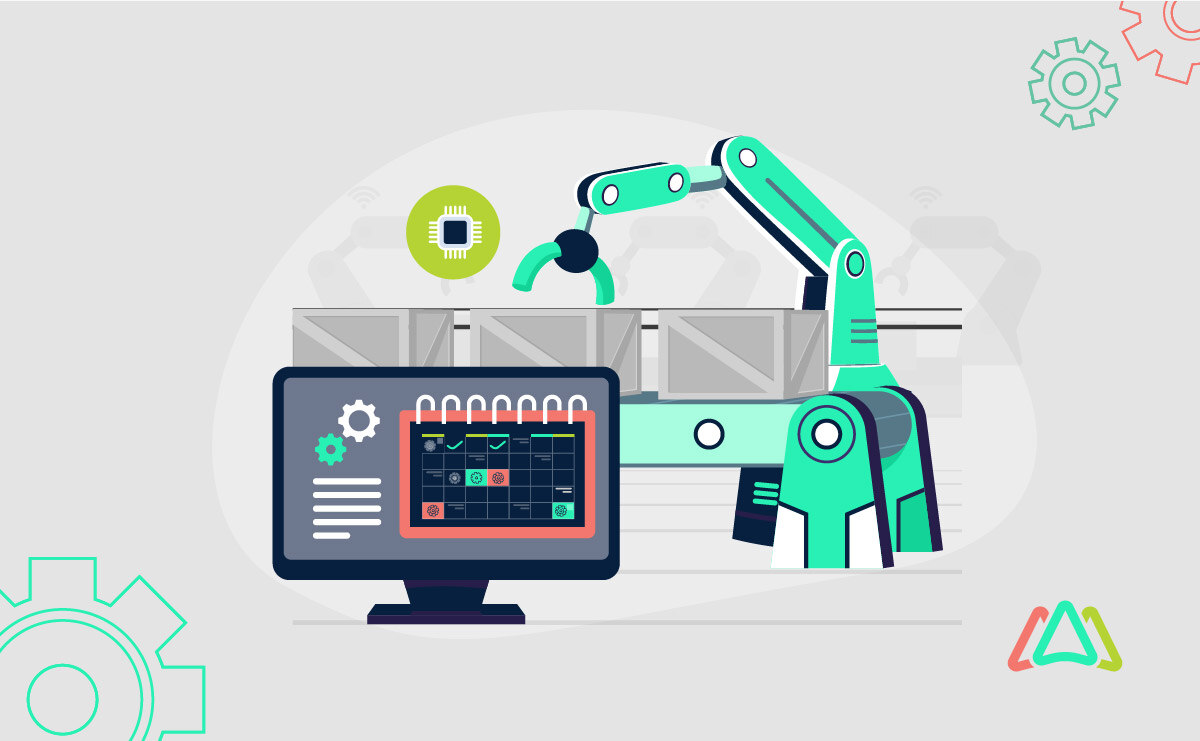
Role of Maintenance as a Service in Preventive Maintenance Strategies
Maintenance-as-a-Service (MaaS) is transforming how organizations manage their equipment and assets. This model offers a comprehensive approach to preventive maintenance that goes beyond traditional methods, ensuring continuous care and minimizing disruptions. By providing access to advanced tools and expert resources, MaaS enables businesses to stay ahead of potential issues before they escalate into costly downtime. This article explores how MaaS complements preventive maintenance strategies by offering data-driven insights and expert knowledge. It highlights how businesses can bridge internal capacity gaps, achieve greater efficiency, and future-proof their operations through this innovative approach.
Understanding Maintenance as a Service (MaaS)
Maintenance as a Service (MaaS) is a modern approach to equipment maintenance where organizations outsource maintenance activities to specialized service providers. Unlike traditional maintenance models, which rely heavily on in-house teams or one-off service calls, MaaS operates as an ongoing partnership. It delivers proactive maintenance through subscription-based services that include predictive and preventive strategies. This model shifts the focus from reactive repairs to continuous monitoring and optimization, helping companies stay ahead of potential equipment failures.

Key Components of MaaS
Subscription Model
MaaS is often offered as a subscription, with clients paying a fixed fee (monthly or annually) to access a range of maintenance services. This provides predictable costs and eliminates the need for emergency spending on unexpected breakdowns.
Integrated Services
The MaaS model offers a combination of predictive maintenance, preventive tasks, repairs, and remote diagnostics, all in one package. These integrated services reduce operational complexity by centralizing maintenance activities under a single provider.
Continuous Monitoring and Predictive Analytics
Providers often use IoT devices to collect real-time data from equipment and analyze it through AI-powered platforms. This continuous monitoring helps detect potential issues early, enabling proactive interventions that prevent disruptions.
Benefits of MaaS
Cost-Effectiveness
By preventing unexpected breakdowns and optimizing maintenance schedules, MaaS reduces overall maintenance costs. It also saves companies from investing heavily in in-house expertise and equipment.
Increased Efficiency
MaaS providers specialize in maintenance, offering expert knowledge and advanced tools that ensure quicker diagnosis and repairs. This boosts operational efficiency by reducing downtime.
Flexibility
With a MaaS subscription, businesses can scale their maintenance services up or down based on operational needs. This flexibility makes it easier to adapt to new technologies, seasonal demand changes, or equipment upgrades without additional overhead.
MaaS introduces a promising and effective technology-driven approach to preventive maintenance, offering businesses reliable, cost-effective, and efficient solutions that go beyond traditional maintenance models.
Benefits of Preventive Maintenance
Reduced Downtime
With regular inspections and proactive interventions, businesses can avoid unexpected breakdowns, leading to fewer operational disruptions. This ensures machinery is available when needed, helping maintain production schedules.
Extended Equipment Lifespan
Preventive maintenance minimizes wear and tear by keeping machines in good working condition. Consistent care extends the lifespan of equipment, reducing the need for frequent replacements and large capital expenditures.
Improved Safety
Properly maintained equipment reduces the risk of accidents caused by malfunctions or breakdowns. This promotes a safer work environment, ensuring compliance with safety standards and protecting both employees and assets.
How MaaS Enhances Preventive Maintenance
Data-Driven Insights
Maintenance as a Service (MaaS) leverages data analytics to elevate traditional preventive maintenance into predictive and prescriptive maintenance. By utilizing IoT sensors and cloud-based platforms, MaaS providers gather real-time data on equipment performance metrics like temperature, vibration, and usage cycles. This continuous data flow enables predictive maintenance, identifying potential issues before they cause downtime. Additionally, AI-powered analytics offer prescriptive maintenance solutions, recommending specific actions such as part replacements or lubrication schedules. This data-driven approach optimizes equipment health, minimizes unnecessary repairs, and ensures maintenance is performed precisely when needed.
Access to Specialized Expertise
One key advantage of MaaS is access to specialized expertise that many organizations may lack in-house. MaaS providers offer trained technicians and engineers with advanced diagnostic skills and industry knowledge. These experts provide valuable insights on maintenance schedules, equipment upgrades, troubleshooting, and staying up-to-date with the latest trends and technologies. This collaboration helps organizations close knowledge gaps, ensuring maintenance strategies are effective and aligned with industry standards.
Enhanced Resource Allocation
MaaS providers offer access to advanced tools and technologies, such as IoT-based monitoring systems and specialized diagnostic equipment, that may be beyond the reach of many businesses. This allows organizations to streamline maintenance processes and optimize resource allocation. By outsourcing maintenance tasks to MaaS, businesses can focus internal teams on core operations while ensuring that critical assets receive proper attention. MaaS also provides scalable resources like remote monitoring tools, replacement parts, and repair services, helping businesses maintain operational efficiency, even during peak periods.
Best Practices for Implementing MaaS in Preventive Maintenance Strategies
Assessing Organizational Needs
Before adopting Maintenance as a Service (MaaS), organizations must assess their current maintenance capabilities and identify gaps. This includes analyzing maintenance performance metrics like downtime frequency and repair costs, evaluating resource availability in terms of staff expertise and tools, and pinpointing problem areas such as chronic equipment failures. A thorough needs assessment ensures that MaaS is aligned with operational goals, enhancing predictive capabilities, filling expertise gaps, and supplementing resource shortages, all while complementing existing efforts rather than replacing them.
Selecting the Right MaaS Provider
Selecting the right Maintenance as a Service (MaaS) provider is key to success. Organizations should consider providers with relevant industry expertise, ensuring they have experience with the specific equipment and operational environment. The provider's technological capabilities, including IoT integration, predictive analytics, and cloud-based monitoring, are also important. Additionally, they should offer comprehensive service support, from remote diagnostics to on-site repairs and equipment upgrades. Customer support and flexibility are key, along with scalability, to accommodate future growth. By choosing a provider that aligns with your organization's needs, MaaS can integrate seamlessly and deliver long-term value.
Integrating MaaS with Existing Processes
Integrating Maintenance as a Service (MaaS) into existing maintenance frameworks requires careful planning and collaboration. Involve key stakeholders, including operations, IT, and maintenance teams, early in the process to ensure alignment and prevent resistance to change. Map out how MaaS will interface with current processes like work order management and inventory tracking and ensure the provider's tools are compatible with existing platforms like CMMS or ERP systems. Training internal teams on new systems is essential for a smooth transition, and establishing KPIs with ongoing feedback helps monitor performance and optimize the MaaS partnership for long-term success.
Future Trends in MaaS and Preventive Maintenance
Technological Advancements
The future of Maintenance as a Service (MaaS) is driven by emerging technologies like AI and Machine Learning, which improve predictive maintenance by forecasting failures early. IoT sensors enable real-time data collection for condition-based maintenance, while AR/VR allows remote experts to guide technicians in repairs. Blockchain enhances transparency in maintenance records. Blockchain is a decentralized ledger technology that records and secures data transparently, making maintenance records tamper-proof and enhancing asset management and compliance. As these technologies evolve, MaaS will offer more efficient, cost-effective solutions for businesses.
Evolving Industry Needs
Shifting market dynamics and customer expectations are driving increased demand for MaaS. Businesses are focusing on operational efficiency to reduce downtime, while the rise of remote work is fueling the need for outsourced maintenance that can manage equipment remotely. Workforce shortages are also pushing industries to rely on external providers for specialized expertise. Additionally, companies are seeking flexible, scalable, and customized service models to meet evolving operational needs. These trends highlight MaaS as a vital solution for addressing the changing priorities of modern industries.
Sustainability Considerations
MaaS is increasingly promoting sustainable maintenance practices, aligning with global efforts to reduce environmental impact and improve resource efficiency. By extending equipment lifespan through predictive maintenance, MaaS helps minimize waste and the need for frequent replacements. Data-driven insights enable businesses to enhance energy efficiency, reducing carbon footprints. MaaS also supports circular economy practices through repair, reuse, and refurbishment while ensuring compliance with environmental regulations. As sustainability becomes a core objective, MaaS will continue to align maintenance strategies with eco-friendly practices, creating value for businesses and the environment.
Conclusion
Maintenance as a Service (MaaS) offers a transformative approach to preventive maintenance, filling critical gaps that internal teams may struggle to address. Through data-driven insights, MaaS enables accurate predictions and proactive interventions, minimizing downtime and maximizing equipment performance. Access to specialized expertise ensures that businesses benefit from advanced knowledge and best practices while additional resources and technology enhance maintenance efficiency. Ultimately, MaaS empowers organizations to reduce costs, improve safety, and extend asset lifespan, positioning them for long-term operational success.
As industries evolve and maintenance challenges grow more complex, now is the time for businesses to rethink their maintenance strategies. Integrating MaaS into your operations can drive higher efficiency, reliability, and sustainability, giving you a competitive edge. Embrace MaaS today to future-proof your maintenance practices and ensure the longevity of your assets. Partnering with the right MaaS provider can unlock the full potential of preventive maintenance, setting your business on the path to operational excellence.
TABLE OF CONTENTS
Keep Reading
Ever find yourself checking into a luxury hotel and expecting a relaxing stay, only to find a ...
11 Apr 2025
Organizations are witnessing swift changes in the business environment and confronting a ...
8 Apr 2025
Last month, news outlets and the entire internet was abuzz with the return of NASA astronauts ...
3 Apr 2025
What comes first - CMMS or predictive maintenance? If your answer is either, it is correct. ...
28 Mar 2025
Artificial intelligence (AI) talk has become commonplace. Today, engaging in business-focused ...
27 Mar 2025
Imagine a world where machines predict, diagnose, and fix their issues before they fail. This ...
25 Mar 2025
A facility maintenance plan is at the core of a facility’s operations. This organized ...
21 Mar 2025
Think of managing your maintenance operations like managing a championship sports team. Just ...
21 Mar 2025
The maintenance sector is battling a severe talent shortage that threatens to undermine ...
7 Mar 2025
Manufacturing maintenance is the backbone of industrial efficiency, ensuring machines run ...
5 Mar 2025
No one likes playing a guessing game when equipment breaks down. Yet, maintenance teams often ...
4 Mar 2025
The size of the preventive maintenance software market is discussed in millions of dollars, ...
4 Mar 2025
The organizational structure and corporate hierarchy vary from company to company. Large ...
28 Feb 2025
Maintenance procedures are essential for ensuring the longevity and reliability of machinery ...
21 Feb 2025
Sustainability is no longer just a buzzword; it's a critical component of corporate social ...
20 Feb 2025
A Computerized Maintenance Management System (CMMS) relies on accurate, well-organized data ...
18 Feb 2025
In an era where technology drives operational efficiency, Computerized Maintenance Management ...
14 Feb 2025
A Computerized Maintenance Management System (CMMS) is a key component of modern maintenance ...
13 Feb 2025
Introduction Maintenance management is the foundation of maintenance operations in industries ...
11 Feb 2025
Introduction A Computerized Maintenance Management System (CMMS) is software designed to help ...
7 Feb 2025






